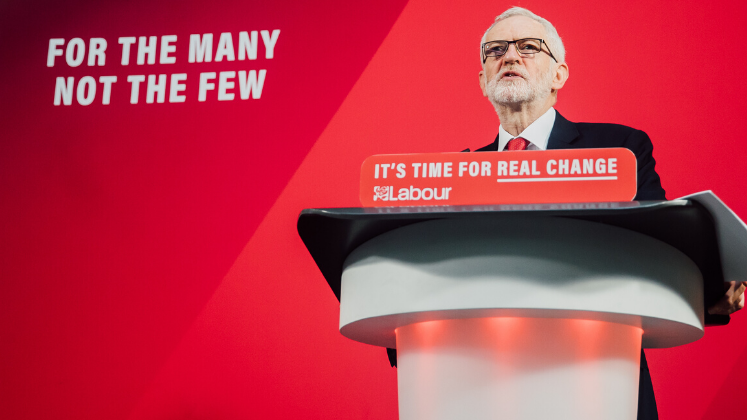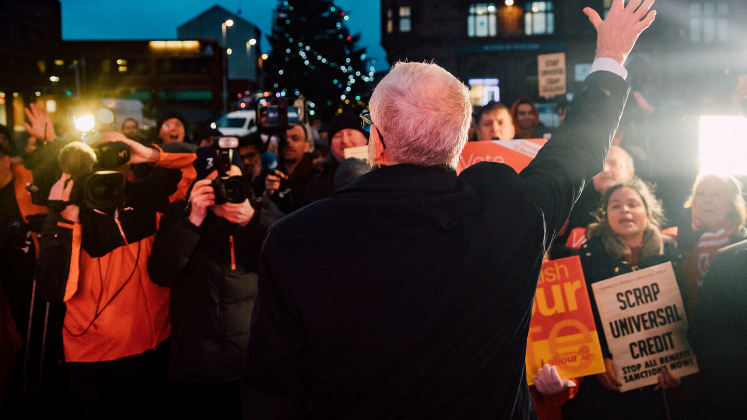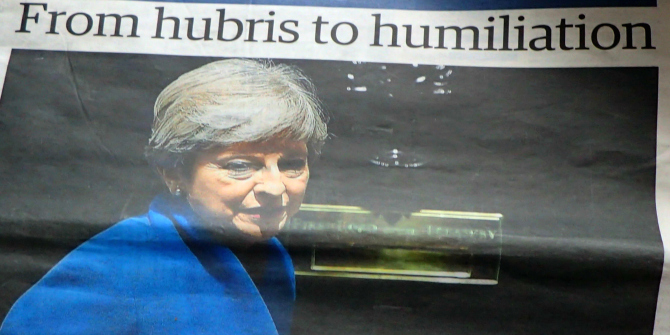In Searching for Socialism, Leo Panitch and Colin Leys bring out the continuities in the policies and aspirations of Tony Benn and Jeremy Corbyn in seeking to transform the British Labour Party into an instrument of socialist change. While urging for greater efforts towards instilling socialist values and objectives within the Labour Party, the authors conclude that without a compelling socialist ideology capable of overcoming the contradictions of 21st-century capitalism, we remain searching for socialism, writes David Lane.
Searching for Socialism: The Project of the Labour New Left from Benn to Corbyn. Leo Panitch and Colin Leys. Verso. 2020.
 Leo Panitch and Colin Leys’s Searching for Socialism brings out the continuities in the policies and aspirations of Tony Benn and Jeremy Corbyn in seeking to transform the British Labour Party into an instrument of socialist change. Searching for Socialism is arranged chronologically. The first five chapters summarise the content of The End of Parliamentary Socialism, published by the authors in 2000, which covered the period of Benn’s challenge to the rise of New Labour under Tony Blair. The remaining chapters consider New Labour in power and its contest with Labour’s ‘new left’, culminating in the leadership of Corbyn, and end with the defeat of the Labour Party in the UK General Election of 2019.
Leo Panitch and Colin Leys’s Searching for Socialism brings out the continuities in the policies and aspirations of Tony Benn and Jeremy Corbyn in seeking to transform the British Labour Party into an instrument of socialist change. Searching for Socialism is arranged chronologically. The first five chapters summarise the content of The End of Parliamentary Socialism, published by the authors in 2000, which covered the period of Benn’s challenge to the rise of New Labour under Tony Blair. The remaining chapters consider New Labour in power and its contest with Labour’s ‘new left’, culminating in the leadership of Corbyn, and end with the defeat of the Labour Party in the UK General Election of 2019.
What Benn and Corbyn hold in common is a belief that socialism can be achieved by parliamentary means, through the ballot box rather than on the streets; by voting rather than fighting; by compromise rather than civil war. The authors reiterate Benn’s insistence that reform must ‘protect our people who are now locked into [the system] while we change [it]’ (98). The authors emphasise that Benn and Corbyn insisted that the social-democratic agenda for political transition is predicated on transforming property relations through public ownership of the means of production which can only be achieved by democratic means. Public ownership of property and a people’s democracy are crucial in their understanding of a social-democratic transition. The detailed discussion in the book records how the Labour Party since the end of the Second World War has failed to promote these ends and analyses the underlying causes. The remedies, the authors contend, lie in the ‘Labour new left political project’ (3) pursued by Benn and Corbyn.
Their critique of the shift to the right in the Labour Party epitomised by Blair’s New Labour somewhat underplays the initial support for the New Labour ideology and dwells on factional differences between various groups both within the Labour Party and the wider labour movement. The authors point out, however, that Neil Kinnock received a standing ovation at the Labour Party conference in 1985 (119) and Blair’s deletion of the old Clause 4 (on public ownership) received 90 per cent of the constituency delegates’ votes (126).
The discourse in the book deals in detail with problems confronting the Labour left in establishing itself in power. Here considerable attention is given to the endemic conflict between the Parliamentary Labour Party and its ties to the Party leader, the Party conference and National Executive Committee and Party members as the legitimate sources of authority. The authors show how the parliamentary leadership under Blair effectively made policy and turned the Party conference into a ‘hugely symbolic event’, a ‘showpiece’ (129). Under Blair the revised Clause 4, with its emphasis on a dynamic economy, a just society, open democracy and a healthy environment (127), became the essence of New Labour’s form of managed capitalism. Institutionally, New Labour became an acceptable face of Thatcherism and a form of leadership democracy exerting power through Labour Party officials (‘social-democratic centralism’), with the Labour Party being converted into a ‘plebiscitary party’ (157-58). 
However, in following the conventions of the US Democratic Party by extending the franchise for the election of Party leader to Party members and supporters, the New Labour administration accepted the procedure of One Member One Vote, which paved the way for the unexpected election of Corbyn. Panitch and Leys detail the revolt against New Labour and the failure of Ed Miliband in accepting the mantle of responsible capitalism to provide an alternative to the market-oriented Conservative-led Coalition government. They show how extra-parliamentary forces, particularly Union commentators such as Andrew Murray and Len McCluskey, Kate Hudson (CND) and Ken Loach, contributed to a major political realignment, similar in character to socialist developments in Greece (Syriza), Spain (Podemos) and Germany (Die Linke).
Within the book, there are good accounts of the new economic strategy. These developments shifted the ideological and political focus to global economic power and, as Murray shrewdly put it, politics became ‘more class focussed than class-rooted’ (183). Corbyn became the focal point of the Labour left’s counter-movement against austerity policies and the market-based assumptions informing Labour Party policy. The objective now was to transform the Party from its traditional parliamentarianism into an agency for socialism (199). The authors show how Momentum, supported by the Unite Union, was instrumental in the rise of Corbyn, and how Labour’s policies of greater state intervention, proposals for public ownership and greater democratisation regenerated the Labour Party both as an organisation and as an electoral force. But it was not enough.
The final chapters of the book explain left Labour’s dismal electoral defeat in 2019 and dwell on how the Labour Party might be turned to adopt socialist principles. The authors point to the strength of campaigns (both within and outside the Party) against the Corbyn leadership. As well as being a response to investigations into antisemitism within the Labour Party, negative media coverage, they contend, reflected hostility to Corbyn’s policy on the part of state institutions like the Treasury and the civil service, the City of London as well as external interests such as NATO and the USA. Implementing a policy inimical to global capitalism and the City of London would present unsurmountable problems for a socialist government. Corbyn was subjected to a character assassination in the British press, including the Guardian, which usually backs Labour. The authors raise the problem of how a Party based on socialist principles can transcend a socially managed type of capitalism. While critical of the way that Labour’s election manifesto in 2019 was constructed, they also raise fundamental problems of capitalist society which predisposes people to capitalist ways of doing things. The media is crucial as a socialising agent.
Throughout the book the authors emphasise the importance of extending democracy both within the Labour Party and in society, and in this they are to be applauded. Building a democratic base in the Party however, in my view, would not necessarily ensure the kinds of policies advocated by a Labour new left. A party with an open membership, as anticipated by Blair’s reforms, gives a vote to anyone who wishes to join. Democracy is a mechanism and can be used by any faction to promote their own views, policies, interests and candidates. Party members and supporters may well support a socially managed type of capitalism. Social-democratic centralism (authority taken by officials in the party apparatus), which was used against Corbyn’s campaign, raises the question of bureaucratic power. Continental social-democratic parties, despite giving party members and party conferences greater control over elected deputies, have also been subject to the domination of the centre, as described in Political Parties, Robert Michels’s classic study of the SPD in Germany in the early twentieth century.
Curbing media ownership by democratic means is clearly desirable on political grounds but Corbyn’s suggestion to elect editors by journalists would not necessarily lead to socialist-leaning media. The socialisation of the ethics of capitalism and the market as a way of life is very deep-seated and provides a third dimension of power blocking out socialist values and policies. This poses questions about electoral democracy as a route to socialism. As Karl Kautsky pointed out: socialism without democracy is impossible, but democracy can flourish without socialism. Any alternative to promote a socialist worldview would require a thorough recasting of the educational system, social science research and the means of mass communication.
The authors are aware of these problems and they urge greater efforts to instil socialist values and objectives within the Labour Party. In their final section the authors call for new political forms to address, and ‘popular capacities to overcome’, the contradictions of 21st-century capitalism (255). The Labour Party election manifesto of 2019, if fulfilled, would certainly have been a step towards socialism. But new left Labour is very far from articulating a counter-ideology on which the authors’ call for policies and forms of organisation is predicated. A socialist party in power in an electoral democracy will find itself in a quandary: in the UK, really significant moves to public ownership (say, nationalising financial companies in the City of London) will lead to economic sanctions and economic collapse – and rejection at the polls. Whereas marginal changes (enhancing the welfare state, even putting employees on boards of companies) over time leads to assimilation into, and gives even greater legitimacy to, the capitalist system. Without an alternative socialist ideology, achieving socialism through the Labour Party is likely to be what Ralph Miliband called a ‘crippling illusion’ in his article ‘Moving On’ for The Socialist Register (Miliband, 1976, 128). As Panitch and Leys rather pessimistically conclude, overcoming this illusion is ‘the central dilemma for democratic socialists, not just in Britain but everywhere’ (255). As the title of their book proclaims: we remain ‘searching for socialism’.
Note: This review gives the views of the author, and not the position of the LSE Review of Books blog, or of the London School of Economics.
Banner image: Tony Benn, 2008 (Glastonbury Left Field CC BY SA 2.0).
In text image: Jeremy Corbyn, 2019 (Jeremy Corbyn CC BY 2.0).
Feature image: Amalgamation of Tony Benn, 2008 (Glastonbury Left Field CC BY SA 2.0) and Jeremy Corbyn, 2019 (Jeremy Corbyn CC BY 2.0).







